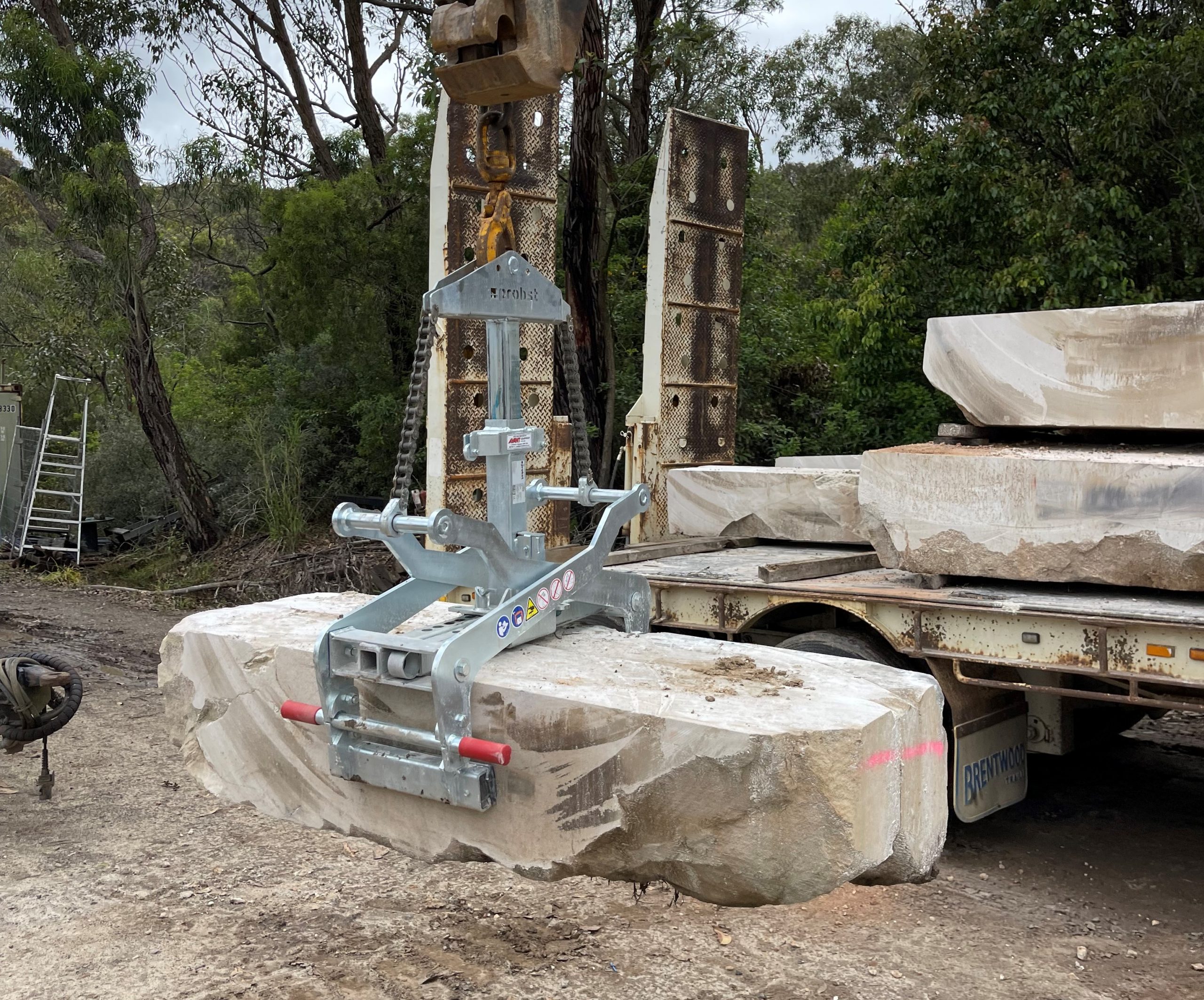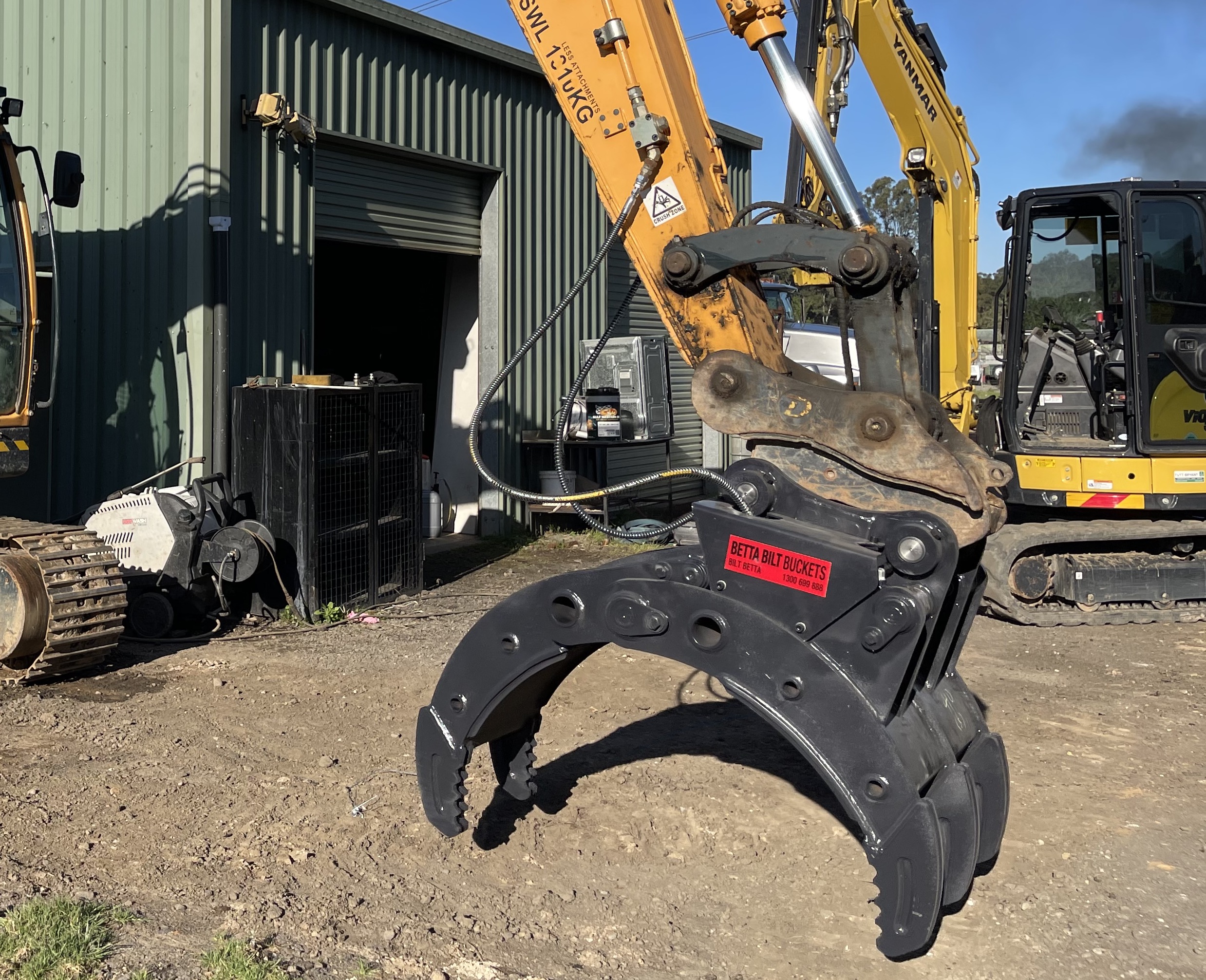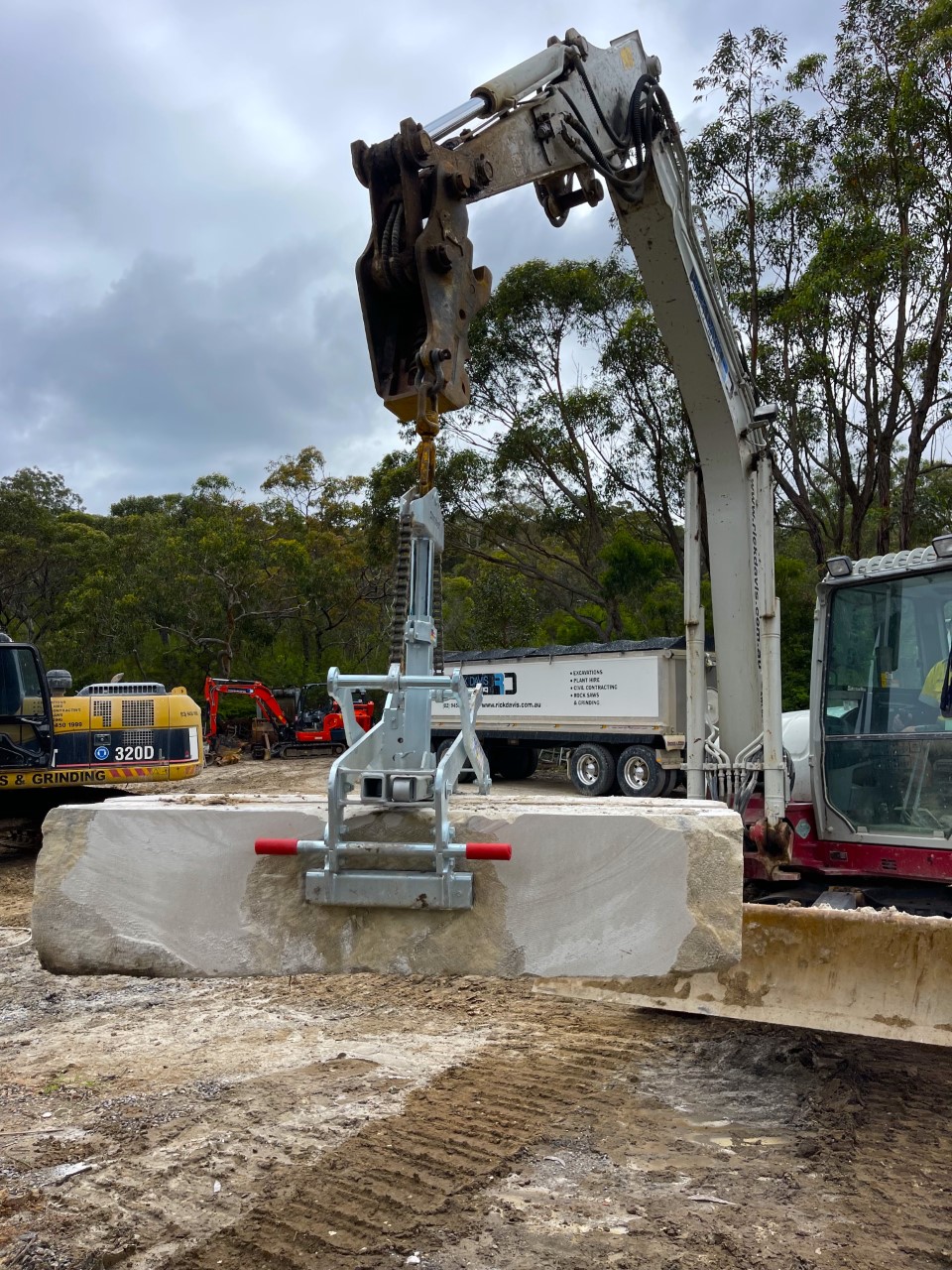
Construction crews have a range of equipment at hand for both small and large projects. One such tool is the grab, which might be a regular grab or block grab. These two types of machinery have distinct purposes in the workplace or on-site. Grabs are most commonly used to move large volumes of materials or particularly heavy objects around the worksite or onto transportation.
Below, we’ll explore the differences between regular grabs vs block grabs and to which task each piece of equipment is better suited.
Regular Grabs

‘Regular’ grabs, which are usually hydraulic or hydraulic rotating grabs, are used to literally ‘grab’ materials on the worksite. They facilitate easy and efficient relocation of debris or construction materials that are simply too heavy to move by hand. As such, these machines are extremely commonplace in construction, demolition and even agricultural sites. Some of the purposes of a regular grab may include:
1. Removing debris from a site after the demolition of a structure
2. Sifting through and separating out recyclable materials from other waste
3. Transferring materials from a site into a vehicle for transportation
4. Agriculture and farming
Block Grabs

Block grabs fulfil a specific task on a construction site, and they’re commonly seen in brickyards. The block grab has a more angular design than the regular grab due to the nature of the loads to be lifted. Also known as a ‘scissor grab’ due to its comparative design and movement, the block grab can lift awkwardly sized stacks of bricks, paving slabs and other materials that have been secured as a single unit before being moved.
Upon lifting the block grab, the forces of gravity naturally result in the grab’s jaws closing around and applying pressure to the objects being moved. This, coupled with rubber-lined jaws on the grab itself, results in a powerful and stable grip. Typically, most block grabs are designed to carry loads of between 200 kg and 2,500 kg, with jaws that vary in width. Ensuring that a block grab meets the minimum load and capacity requirements for any given job is critical to maintaining worksite safety.
Other Types of Grab
While regular and block grabs are two of the most commonly used types, other designs exist for certain tasks. Some use tines, individual clamping ‘teeth’, while others use scoops. Some attachments can be fitted in place of your regular grab, which allows it to fulfil a specific purpose. Below, we’ve detailed a few key facts about the other kinds of grabs or attachments you might encounter on a worksite:
1. Clamshell grabs: Clamshell grabs typically have two large scoop-shaped shells. They’re commonly used to gather gravel, sand and other grainy materials that would otherwise be impossible to lift with a regular grab. Some clamshell grabs are adapted specifically for digging in the soil or for dredging debris from water.
2. Cutters/shears: Hydraulic cutters or shears can be used when metal parts or piping needs to be cut. The hydraulic force behind the shears makes for an extremely powerful cutting force, which can complete tasks more quickly than other power tools.
3. Orange peel rock grabs: Orange peel or ‘cactus’ grabs are superior at handling heavy scrap, stones, household waste and more. They commonly feature six to eight tines, which form a tight ‘cage’ around the materials being handled.
4. Pipe clamps: As the name would suggest, pipe clamps are designed for holding and moving lengths of pipe. They feature two tines, which close around the pipe, forming a tight grip.
5. Roundnose grabs: Roundnose grabs are often used for dredging water to remove debris or for heavy-duty digging in hard terrain that may contain rocks. The equipment usually features two shells, similar to a clamshell grab’s design, which are often supported by knives or teeth. These attachments can add further impact strength when you need to break through tough soil.
Buying Grabs in Australia
Purchasing a regular grab or block grab is an investment, so you’ll want to know that you’re getting a high-quality piece of equipment from a reliable and experienced supplier.
Earthmoving Attachments Australia (EAA) and the EEA Group have many years of experience providing affordable earthmoving equipment across the eastern states and beyond. Every product that we sell represents the best brands in the construction industry, with years’ worth of cumulative experience and design expertise shining through. This includes well-known and loved names like Case and Bergmann.
Of course, knowing that your equipment will be maintained is important, and any problems that may arise are attended to within 24 hours. We can even offer servicing for your existing equipment, regardless of its brand or origin.
EAA has six branches in Brisbane, Melbourne, Newcastle, Queanbeyan, Sydney and Toowoomba. Contact Earthmoving Equipment Australia for more information or to get a quick quote and discover how affordable earthmoving equipment can be. Or call our staff on 1800 ATTACH

